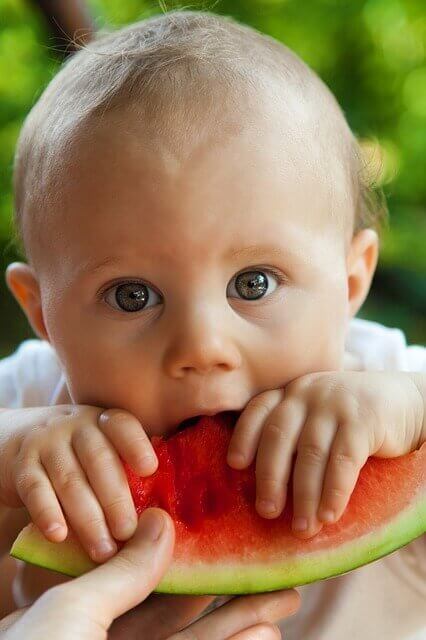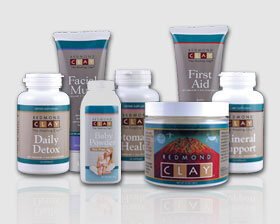Eating like a big boy
Someone asked recently where my son was at with eating and what types of foods we were feeding him at this point (just turned 10 months) and Crystal asked what works for others in feeding babies nutritiously and frugally. Here’s what our big/little guy (he’s growing up so much, but he’s still such a little peanut size-wise) is eating these days.
Foods in his repertoire include:
- squash
- turnip
- parsnip
- beets
- green beans
- chicken (blended with homemade bone broth)
- beef (as above, with broth)
- carrots (he loves them, but is currently off of them due to eczema and sensitivities)
- sweet potato
- applesauce
- blueberries
- banana
- avacado
His basic eating schedule is:
6:00am- Nurse
8:00am- Nurse
11:30/12:00- Nurse
12:30- 1 cube of baby food (usually a fruit, or one of his veggies)
3:30- Nurse
6:00- 2 cubes of food (either just a meat or veggie, or one of each)
7:00- Nurse
Sometimes there is an extra nursing session added in if I feel I haven’t had enough milk in the afternoon, or if he seems really hungry. Also, these times are all approximate. He does have a set routine, but it’s loose and it can change by a half hour to an hour (or even more) from day to day.
Now that he’s starting to be a lot more interested in food, I’ve been having to make significantly more baby food, and it will only increase from here. In a few months (after he’s a year old), I will begin to give him some of the less allergenic grains, soaked of course. These will include millet, quinoa and rice, and then down the road I will introduce barley, oats, spelt and kamut. I intend to hold off on wheat until after 2 years, simply because it is such an allergenic food and our daughter has a sensitivity to it, as well as my husband (and even me, at the moment!).
So how do I keep baby food costs inexpensive? A few ways…
1) As Crystal mentioned, nursing exclusively not only saves money, but it is the most nutritious form of sustenance I can give my babies. I do not give solids until after 6 months, and even then it is only supplemental, and they are primarily breastfed until around a year, at which point I will make solids a more substantial part of their diet.
2) Continue nursing for longer than what is usual or expected! There is no need to stop nursing your baby when they hit that one-year, World Health Organization approved mark. Older babies can continue to thrive on breastmilk, and do not need to have either cow’s or goat’s milk or formula introduced yet. I breastfed my daughter until she was nearly 2 (around 20 months). I did start to introduce goat’s milk a little at around 15-16 months, only so that she could drink it by the time I weaned her, but I kept breastmilk her main milk source.
3) Make your own baby food, using whole foods. Here is a recent post I wrote on how to make your own baby food. It is quite simple, really, and not time consuming. I included a price breakdown in the post as well, which may be helpful for some. I simply buy extra produce (carrots, beets, sweet potatoes), or when I am cooking and have extra, I will just pop it in the blender and make a tray of food. For instance, last week I had some extra turnip that I didn’t have a plan for, as well as a bit of leftover cooked chicken (I cook whole chickens and store the meat in the freezer in smaller portions until I need it). So while I finished cooking dinner, I steamed the turnip, then added it and the chicken to the blender and made his first ever mixed dinner (which he adored by the way- it must be a good combo!).
When we go out, I bring along however many cubes of food that I need in a glass baby food jar, or a plastic container (although this is my least favorite option, and I try to find a bowl wherever we go to put it in to warm and serve it). Some great convenience foods for traveling are bananas (because they can be mashed with a fork), and avocados (which you can simply cut open and spoon straight out of the skin).
4) Resist the temptation to buy packaged baby cereals. They are, quite honestly, a complete waste of money and do not even compare to homemade whole grains when it comes to nutrition. Instead, try soaking your grains and preparing a delicious hot cereal made of millet, rice or oats? Since I don’t recommend feeding babies grains until after a year, there is no real concern for having the grains ground finely (like the bought cereals), and properly soaked and cooked whole grains can be quite smooth and easy to eat. Initially, the grains should be served quite plain, although here are some ideas for making it more interesting for the older baby.
Whole grains can be purchased in bulk for ridiculously cheap prices. I buy 5 lb bags of organic oats for $4.50 (it would be even cheaper if I bought the 10 or 25 lb bags, which I am about to switch to). Out of the bag, I would make the equivalent of probably 10 boxes of baby oatmeal or rice cereal. I honestly don’t even know how much it sells for, as I don’t buy it, but I imagine that would be a savings, although the nutritional benefits alone are worth it!
For more on this topic, see these posts:
Introducing solids to babies
What to feed baby
Making your own baby food
Homemade teething cookies for baby
Whole grain breakfasts and snacks for toddlers
What about you? How do you make feeding a baby affordable, and nutritious?




Love your blog. Thanks for your post
Jennifer
Just wanted to let you know that you have inspired me to make my own baby food. I thought about it with my daughter but I just thought it would be a lot of work. Well I have started doing it for my son and I love to make baby food. It’s so easy and it smells so much better than the jars of baby food, not to mention that it’s way cheaper.
Yay, I’m so glad, Rebekah! Thanks for letting me know!
Do you get your organic oats online or locally?
I have been reading your blog for a couple of months now, and really enjoy it. I recently purchased a book called Mommy Made to begin making baby food for our newest who is 5 months old. Your post have also been an encouragement to me that I can do this. I never even tried with my older 2 children. I had to work when they were younger. Fortunately, several years ago, I became a homemaker, and was able to stay at home and homeschool my children. With this one, I am so blessed to be able to stay home from the beginning. That being said, I have a question for you. I would like to learn more about whole grains and how they can be used. You seem to be knowledgeable in this area, and I was wondering if you could recommend any websites or books that would help me out.
Thanks
Linds, I buy them from Azure Standard. Here’s their website:
http://www.azurestandard.com/
I can do this from Canada because my MIL lives in Seattle, so we both go back and forth often enough for me to order almost every month (they do once a month deliveries).
When I can’t get them from Azure, I purchase them from a local store, which has it’s own organics brand.
Jennifer, how wonderful that you were able to make the transition to being a full time homemaker and home schooler! You must really be enjoying all of the time that you have with your kids, and especially this new baby!
May I answer your question in a post to share some of my resources with everyone else? Thanks!
Answering it with a post would be wonderful. I am sure there are others like me who would love to hear what you have to say. Thanks in advance for taking the time to post about it. I look forward to reading it.
I enjoyed this article, and I have a question: do you object to boxed baby cereal because it isn’t nutritious? We get it for free on a government program for low income families and I never thought about it being bad for my baby. I am doing solid foods now with my second child. We do have one of those hand food mills, and I have given him whole grains of rice (2 or 3 grains at a time).
With my first we were serving overseas and my biggest concern was ingredients listed in a language I didn’t know how to read. We were in Asia and the baby cereal has sugar in it!
CanCan, I object to boxed baby cereal because it is so much less nutritious than any other cereal you can make yourself. Also, it would require soaking to make it easier for baby to digest and assimilate. And, although it doesn’t have “sugar” it does have sweetener, in the form of malted barley (not all of them, but at least some of the Heinze ones that I looked up have it). Anything malted or any kind of syrup is a sweetener. I think added fruit even sweeteners are fine when baby is older, more like 1 1/2, but when they’re little, I would prefer them to learn to just eat the cereal and like the taste of it, plain.
I think it’s a great idea to take the actual grains or whole food and just use a food grinder!